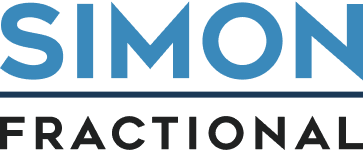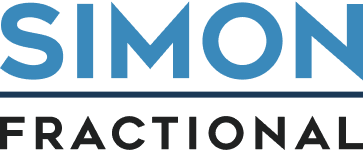The High Cost of a Poor Handoff
In many SaaS organizations, marketing generates leads that never convert, and sales reps chase opportunities with incomplete context. The result? Friction, inefficiency, and mistrust.
Here’s what happens when marketing and sales aren’t aligned:
- Lead leakage: High-intent leads aren’t followed up on in time
- Low close rates: Reps call leads who aren’t qualified or sales-ready
- Misaligned messaging: Prospects hear one story from marketing and a different one from sales
- Poor attribution: Marketing can’t prove ROI because sales doesn’t track sources
- Churn risk: Mismanaged expectations lead to poor onboarding and higher customer drop-off5
Growth-stage challenge: Most SaaS teams spend months building top-of-funnel demand but fail to optimize the handoff that turns it into revenue. A leaky handoff undermines the entire GTM motion.
What a Seamless Handoff Looks Like
A seamless handoff isn’t about tossing a lead over the wall—it’s about shared ownership and continuity.
In a best-case scenario:
- Marketing and sales agree on what defines a qualified lead
- Lead scoring is based on clear behavioral and firmographic signals
- Each lead has context—what they downloaded, viewed, clicked, or asked for
- Sales follow-up within a tight SLA (service-level agreement)
- Messaging is consistent across ads, landing pages, emails, and sales conversations
- Lead disposition is tracked and fed back into the marketing funnel
This isn’t a pipe dream. It’s what alignment looks like in high-performing SaaS teams and what separates reactive companies from scalable ones.
Leadership insight: Revenue isn’t just about volume—it’s about velocity. A tight handoff accelerates qualified pipelines, improving conversion rates, sales confidence, and customer trust.
5 Strategies to Align Marketing and Sales
1. Define Your Lead Stages Together
Marketing and sales often operate on different definitions of “qualified.” Create shared criteria for what makes someone an MQL (Marketing Qualified Lead), SAL (Sales Accepted Lead), and SQL (Sales Qualified Lead).
To assign clear definitions, use firmographics (industry, size, title) and behavioral triggers (downloads, demo requests, webinar attendance).
Example: An MQL might be a VP of Product at a mid-sized SaaS company who has downloaded a buyer’s guide and visited your pricing page twice in 7 days.
2. Implement SLA-Driven Follow-Up
Speed to lead matters. A study by InsideSales found that contacting a lead within 5 minutes is 21x more effective than waiting 30 minutes.
Set internal SLAs so sales commits to following up within a specific timeframe—ideally, minutes, not days. HubSpot, Salesforce, and Outreach.io all allow automated routing and alerting to enable this.
Execution gap: Without SLAs, marketing can’t ensure ROI, and sales lose credibility with prospects.
3. Provide Context with Every Lead
Don’t just pass a name and email. Include:
- Lead source
- Conversion path (form, ebook, ad, webinar)
- Pages viewed or actions taken
- Job title, company size, and tech stack (via enrichment tools like Clearbit)
This gives reps a complete picture to personalize their outreach and pick up where marketing left off.
4. Align Messaging Across the Funnel
Trust breaks down if your homepage says one thing and your SDR script says another.
Ensure your value proposition, pain points, product differentiators, and tone are consistent from the first touch through the final call. Use shared messaging docs or train both teams together during onboarding.
Also consider integrating marketing into sales enablement efforts: think one-pagers, case studies, objection-handling guides, and persona-specific decks.
5. Close the Loop with Feedback and Data
After sales connects with a lead, what happens?
- Did the lead convert? If not, why?
- Was the lead qualified?
- Was timing the issue?
This feedback loop improves targeting, content, and lead quality. To uncover patterns, use tools like Gong, Chorus, and CRM reporting.
Pro Tip: Host biweekly marketing-sales syncs to review lead outcomes and make real-time adjustments.
Team health: Collaboration isn’t a one-time event—it’s an ongoing relationship built on data, transparency, and shared goals.
Simon Fractional in Action
We’ve seen firsthand how smoothing the handoff between marketing and sales transforms the pipeline:
- For a B2B health and safety platform, we rebuilt the entire lead lifecycle—from gated content to demo workflows—boosting conversion from MQL to SQL by 45% in under 60 days.
- For a workforce compliance SaaS, we created sales enablement content mapped to each buyer journey stage, improving close rates by 28%.
- For a B2B2C brand, we designed a secret shopper campaign that aligned brand messaging across retail partners and internal sales teams, resulting in the highest conversion rates in company history.
Why It Matters More in SaaS
In B2B SaaS, the buyer journey is long, digital, and self-directed. That makes the marketing-sales handoff a critical inflection point.
If marketing owns the first 70% of the journey, sales owns the last 30%—and both need to be in sync to close the loop. A disjointed handoff leads to:
- Wasted ad spend
- Overworked SDRs
- Poor CAC: LTV ratios
- Frustrated prospects who drop out of the funnel
Scalability tip: Founders shouldn’t have to choose between building a pipeline and closing deals. Alignment lets both happen simultaneously.
Final Thoughts: Alignment Is a Growth Multiplier
A seamless handoff isn’t just a process improvement—it’s a revenue strategy.
When marketing and sales work together, SaaS companies see faster growth, lower acquisition costs, and a stronger customer experience. It’s not about getting everyone to agree on everything. It’s about building clarity, accountability, and rhythm into your work.
Next Steps
Looking to eliminate the friction between marketing and sales in your SaaS org? Let’s build the bridge.
Doug Simon
My experience in B2B SaaS started in 2010 when I developed a first-of-its-kind product, creating an entire new category.


